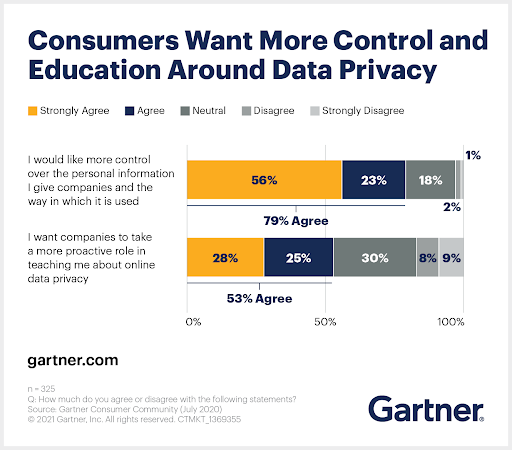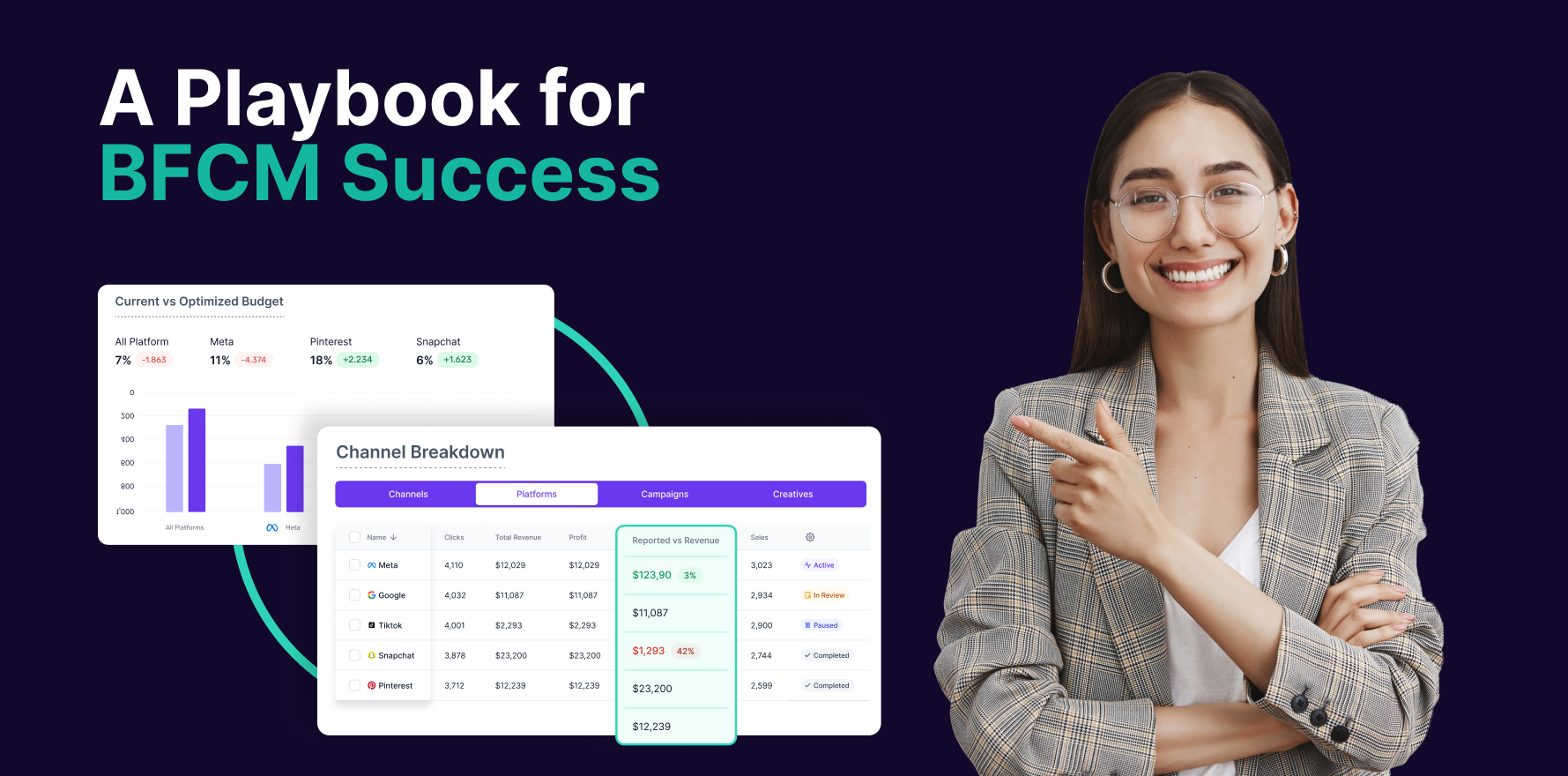There’s a reason marketers deem first party data as an untappedsource.It’s not because brands don’t know its importance. They absolutely do! In fact, according to a 2021 survey, brands that spend at least ten thousand dollars on digital marketing highlighted that they use a combination of newsletters, social media, site/app visitor behavior, and other forms of first party data to grow their brand.
The “why” of first party data is crystal clear to marketers. It helps tailor your brand messaging according to your customer. They want personalization, and first party data helps deliver this. However, it’s the “how” that still has marketers struggling. In the age of privacy and consent, both zero-party and first party data are hard to collect, orchestrate, and leverage in marketing decisions.
Your first party data is the pot of gold at the end of the rainbow. But you’ve got to do it right
First party data can often be an unreachable goal because the “how” of it is still unclear for many marketers. They struggle with the fair value exchange in return for customer data. Therefore, it is critical to take note of the obstacles that come with first party data collection and orchestration. Here, we explore three such challenges:
Roadblock #1: Lack of know-how for activating data collection
Data collection is complex. It requires efficient technology, a robust strategy, and a substantial budget. It is not as simple as sending surveys into the abyss and hoping customers will respond. Instead, data collection requires conscious and concentrated effort to pin down:
- Tailored questions that would help you inform your decisions for better positioning
- Is an email enough, or do you need to ask for a phone number or other contact data points? Should you go for a rating system or a “yes/no” system while asking your customers about their preferences? The scope of questions you can ask is endless.
- How do you even reach all the customers on the relevant device in the first place?
These concerns require advanced proficiency and technology to get the first party data roller coaster running.
Roadblock#2: Clash between personalization needs and privacy concerns

This Gartner study shows one side of the coin. The other side is an obvious truth in the marketing world – if customers feels a personal connection to the brand, they are more likely to buy from it. 80% of customers demand personalization.
So, how do you balance privacy with personalization ? For example, how will you contextualize the result if half of your customers are willing to let you know their gender, but the rest aren’t? Further, with privacy-forward legislations like GDPR, you must ensure compliance across all data collection efforts to avoid penalties.
Roadblock#3: Putting all your eggs in one basket as a way to create a single customer view
Sure, first party information can give you a goldmine of rich data, but can you rely only on what the customer provides without backing from other data sources? Can you prepare for the cookie-less era with just the first party data you collect? Probably not.
Given the underlying privacy concerns and data collection and activation challenges, it won’t be easy to tap into first party data so well that you won’t need supplementary data.
Enter data enrichment
Data enrichment means adding extra layers to your customer data using various tools and channels like newsletter signups, surveys, account logins, mobile app and site visitation data and more.
When you enrich basic customer profiles with demographics and other fundamental data points like lifestyle and life-stage data, purchase intent parameters, geographical data and more, you will be able to activate lookalike modeling, which will assist you in scaling the reach of your campaigns.
Other than the practical data enrichment applications in marketing, data enrichment helps with the following:
- Delivering a holistic view of existing and potential customers: With laser-focused audience insights, you can personalize your marketing efforts right from customer names to creative optimization and timing upselling efforts on the most suitable device.
- De-siloing customer data: When you enrich customer data so that all the data points interact, you are putting together a puzzle. Its finished form tells you everything you need to know about the customer. When these puzzle pieces are scattered over different systems, they never get to fuse to give you this holistic customer profile.
- Being innovative about the data-forward approach to marketing: With data enrichment, you get a better idea of what more information you may need about a customer, either from another data source or directly from the customer. More importantly, your customer data is never static. Your customers are sentient beings, and so is their data. Data enrichment ensures that your customer data is constantly updated and always relevant.
With data enrichment, you are not randomly collecting and evaluating your customer data. Instead, you are identifying specific use cases for a particular data set and then finding the accurate data points at the time of need to fill in the gaps. This saves time, storage, and money, thus contributing to higher ROI on your data investment.
Enrich data for impactful omnichannel experiences
The most renowned use case for first party data is the renewed ability to deliver omnichannel campaigns for your digital native customers. You could be a personal care brand, pet food brand, or a multi-billion-dollar CPG conglomerate. When your customer profiles are enriched with data beyond surveys and newsletter sign-ups, your campaigns are highly impactful.
You will know if Customer John Doe signs into their social media and when they can be targeted with an ad about their favorite beard cream or given a cross-sell of a helmet along with that bicycle they bought.Why? Because you have data about their product preferences, the time they visit a particular platform, the device they visit it from, and when they purchase the most (based on website/app data).
As a result, you will be able to reach your customers in an omni-channel environment and tap into their purchase journey at the most critical touch points.
Unlock the reach and impact of your first party data
First party data and its enrichment is a world worth exploring for any brand, regardless of the sector. It is the best source of accurate data your teams will collect and own, so doing it right is vital.
But you don’t have to do it alone.
In 2020, “64%” of senior industry experts noted that they are partnering with a data vendor to collect and activate first party data. Holler for a demo so we can show you exactly how you can circumvent the challenges around first party data and achieve high ROI with data enrichment.
You may also like
Essential resources for your success






















































